Hi there! I'm going to focus on about the three P's of product marketing: people, product, and process. I'll define each of these three P's as we go along and also share some do's, don'ts, lessons, tools, and takeaways.
I'll discuss on:
- The first P of product marketing: People
- The second P of product marketing: Product
- The third P of product marketing: Process
But before we jump in, let me introduce myself. I’m Emily Ely, Senior Product Marketing Manager, Qwick. I've been doing product marketing since about 2018. My background is in the B2B tech SaaS space, primarily in startups and high-growth companies.
I've been at the company for about a year and a half. Throughout this time, I've grown a lot, and looking back, I wish I had known at the start of my journey what I know now about the three Ps of product marketing.
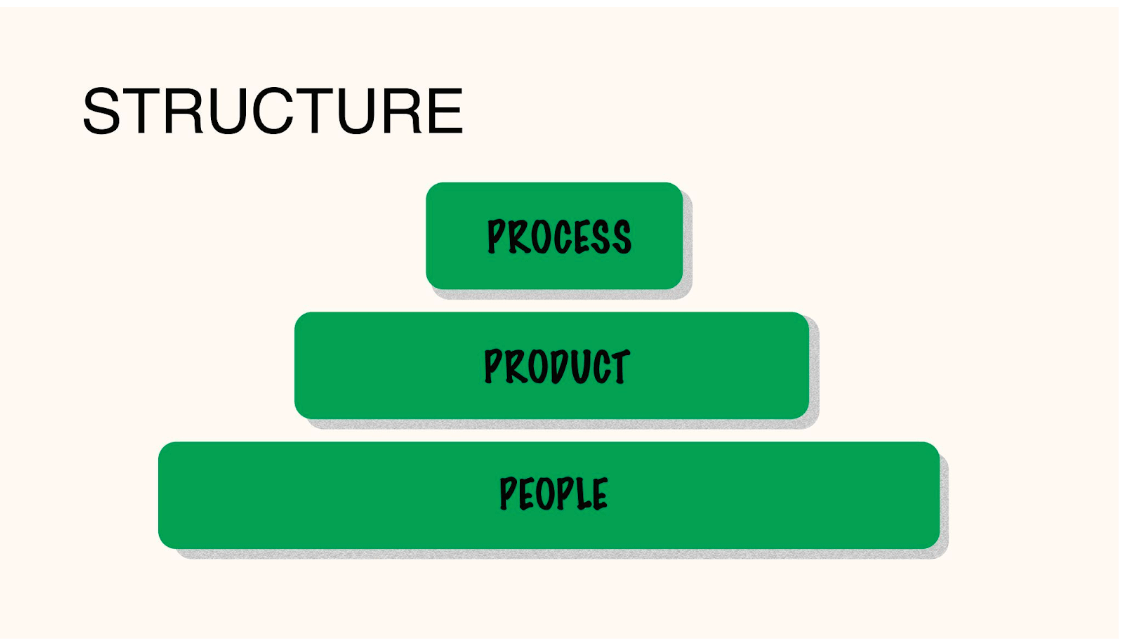
So, let’s take a look at the structure of what we'll discuss today. We'll start with the foundation of our three Ps hierarchy, which is people. From there, we'll dive into understanding your product space, the second piece of our hierarchy.
Finally, we'll wrap up with the process, which is built on the first two elements: people and product. I also absolutely love Schitt's Creek, so that's going to be the theme throughout this article.
The first P of product marketing: People
Alright, let’s start with people, the foundation of our three Ps. In product marketing, the success of our role depends not only on the work we do but also on how well we collaborate with others.
As product marketers, we can't simply come to work, do our jobs, and clock out at the end of the day. We’re working cross-functionally all the time and we need to have strong relationships with our collaborators, be highly self-aware, and be able to give and receive healthy feedback.
Step one: Prioritize strong relationships
My first recommendation for you is to prioritize building good working relationships. Let me explain why I think it's relevant for all of you.
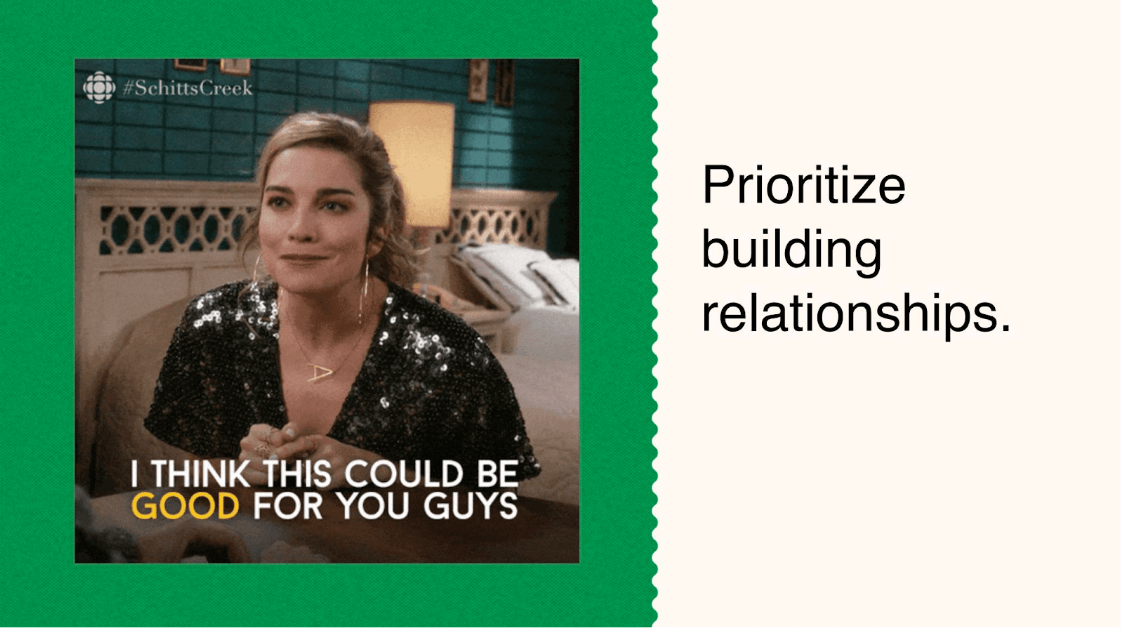
When I first started at Qwick, I was like a bull in a china shop. I came in a little too hot. I just saw so many opportunities for product marketing to drive value. We needed to revamp our pitch decks, establish talking points, launch new features weekly, build out a brand-new team, and revisit our personas.
The possibilities seemed endless. However, looking back, I recognize that I went about it all wrong. Yes, I had the expertise to get things done, but I failed to take the time to listen and understand the people I was working with. I didn't delve into the projects they were involved in, what mattered to them, or their passions.
If I had prioritized those relationships, I could have created alignment and advocates from the very beginning. I could have established a space for product marketing much earlier.
Step two: Learn how to give and receive feedback
The second aspect of people is giving and receiving healthy feedback. This tool should be in everyone's relationship-building arsenal. Now, let me be honest – I've often struggled with feeling comfortable when it comes to sharing my feedback with others, especially when it's not all positive.
I always felt like I was walking a tightrope between providing productive feedback and risking putting the receiver on the defensive. So, instead of risking conflict with my colleagues, I became the kind of person who would bottle everything up until it was ready to explode.
And let's not even get started on how difficult it was for me to receive feedback. I used to take everything personally. It wasn't healthy, and it did not help me or build trust with my colleagues. Maybe you can relate.
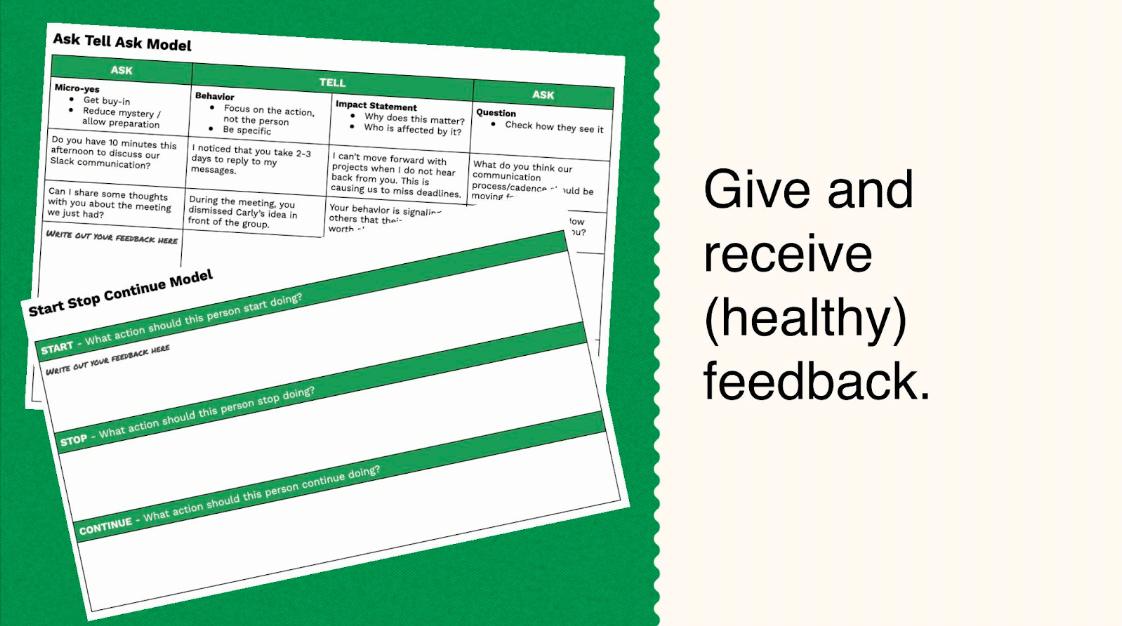
But guess what? You don't have to do that anymore. There are several methods you can use to start sharing healthy feedback. I've personally found the most success with the "ask-tell-ask" framework.
This approach allows the person receiving feedback to mentally prepare themselves because, let's face it, receiving feedback can be a little intimidating. It gives them a chance to set themselves up and reflect on their strengths and areas for improvement after they've received the feedback.
Here's how it works: you start with a micro-ask to get their buy-in. For example, you might say, "Hey, Joey, do you have some time to chat later? I just want to go over how that meeting went." Joey can then respond with either a "Sure" or a "No, I don't want to talk." Remember, relationships are a two-way street.
If Joey agrees, you proceed by telling him about the specific behavior you want to give feedback on. This is key: focus on the action, not the person, and then describe the impact of that action and how it affected you.
For example, you could say, "Hey, Joey, when you were eating that bag of Fritos during the sprint demo, it made it really difficult for me to hear and understand what was happening."
Finally, conclude by asking a question to check in and see if your feedback resonates with the person you’re talking to. This gives you a chance to make sure they understand this feedback, and it gives them a chance to either accept or reject it.
Now, here's an important point to remember: practice makes better. Giving feedback is not easy, and I'm certainly no expert in it. We all have room for improvement, but the more you practice, the better you'll become.
I also understand that this can be more or less challenging depending on the internal culture at your company.
I'm fortunate to work at Qwick, where they emphasize the importance of developing this skill both personally and professionally. I'm grateful that I can practice it on a daily basis because it genuinely helps in building strong working relationships.
Step three: Check your mental health
I'd like to conclude this section on people with an open conversation about mental health. I'm going to get a bit vulnerable here, so bear with me. I hope that by sharing my experience today, I can demonstrate how easy it can be to get in your own way, hindering your ability to develop strong working relationships.
Here's a little backstory: I grew up feeling like I needed to be perfect. It may sound conceited, but that's the truth. I believed I would be judged if I didn't meet that standard.
As I became an adult, this belief evolved into a big ugly beast of imposter syndrome, which severely affected my self-esteem at work. Even on topics I was an expert in, making decisions became almost impossible. On top of that, I felt like everyone was looking to me for the right answers.
Working in startups and high-growth companies, there's no time to doubt yourself. You have to keep going because the pace never slows down.
However, I found myself unsure if my work was accurate (even though in my heart of hearts I knew I was doing a good job) or if it held any relevance or impact. I hadn't built the necessary relationships or trust with my colleagues to truly believe in myself.
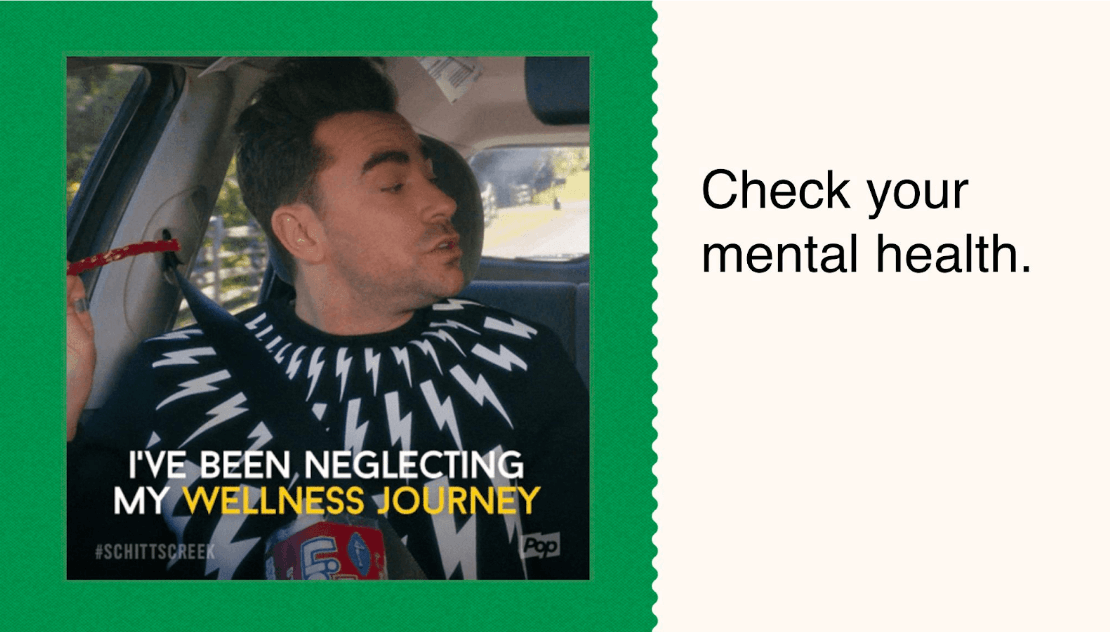
To fast forward a little bit, without delving into all the gory details, external circumstances compounded all of that work stress. It became clear to me that the way I was feeling wasn't sustainable.
I was dealing with regular meltdowns at work while also taking care of my five-year-old and two-year-old at home. Even though I was supported by a loving husband and excellent coworkers (who I struggled to connect with), it was too much.
Finally, I reached a breaking point, and I sought therapy. That changed everything. I started to recognize that I wasn’t broken and that it's okay not to be okay. I found solace in a podcast called "The Anxious Achiever" by Morra Aarons-Mele and I restored personal balance in my life.
I also embraced one of Qwick's core values: "Be human," which resonated deeply with me. As soon as I embraced that, a whole new world opened up. It became easier to not only develop working relationships but also form friendships with my colleagues. What a novel idea – to like going to work and getting to work with your friends!
So, that concludes all the emotional stuff. Let's do a little exercise together, inspired by one of my therapy sessions. We're going to gather all those emotions, put them in a box, seal it up, and set it aside.
Now, we can move right along to the topic of product. But if you need a listening ear or want a resource, please reach out to me. I would love to have a chat.
The second P of product marketing: Product
Let's move on to the second P of product marketing: the product. Being an expert in your product is not enough; you also need to be an expert in the broader product space.
When I talk about the product space, I'm not just referring to the product itself, but everything that surrounds it.
This includes your market, how your product compares to competitors, the differences between buyer personas and user personas, user feedback, messaging, value propositions, and all those hard skills that you're already great at as product marketers.
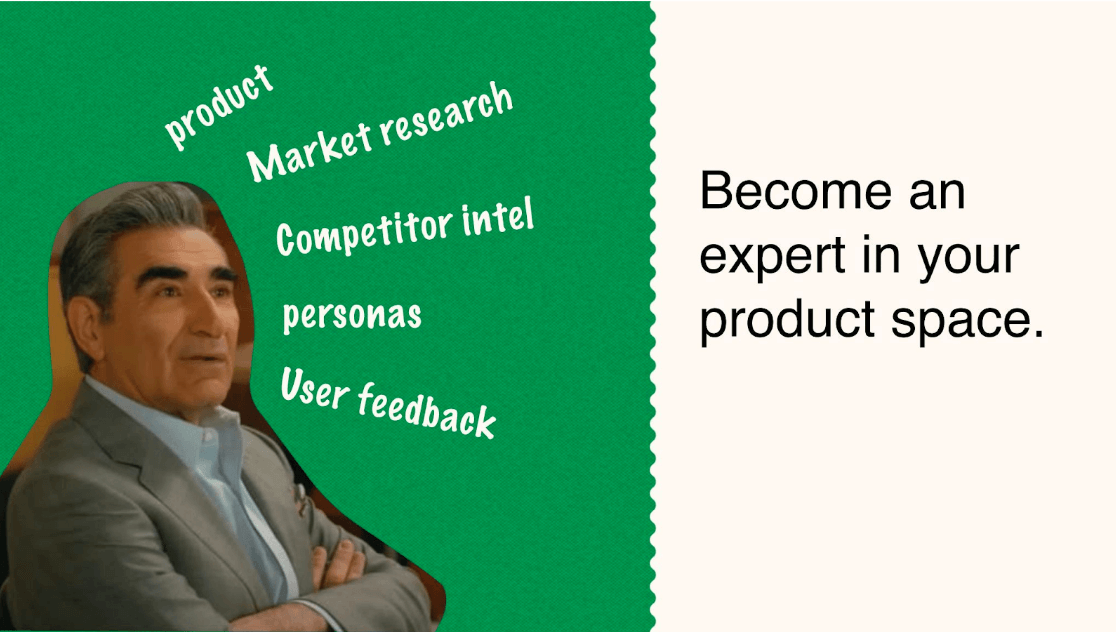
However, I don't want to talk about those aspects of product marketing because you're already familiar with them. Instead, I want to share an example of a specific problem I encountered while exploring the product space at Qwick.
As I delved into our product, I quickly realized that we sent a massive amount of messages to our users. Unfortunately, product marketing lacked the tools or the ability to easily segment and track these messages within our products.
Once I spotted this problem, I started asking questions:
- What is the onboarding process like for our businesses?
- Do we have data on that? Where do users find information on how to use our products?
- Do our personas use our products differently, and if so, how?
- How can I gather this information?
- When and how do we communicate with them?
All these questions were buzzing in my head.
Immediately, I saw an opportunity for product marketing to drive a ton of value. My challenge was to champion this cause. I decided to advocate for a partnership with Pendo.
However, it’s kind of expensive, so I needed to prove that such an investment would be worthwhile and beneficial in scaling the product marketing team and understanding our product space.
This brought up a whole new slew of questions. Who was going to use this tool internally? How would it support our ongoing work and our roadmap?
To get the answers to those questions, I needed to work on some of my relationships within the company. That would smooth the way for me to find the data we were currently gathering in our product and identify any gaps that Pendo could help fill.
I also had to determine which existing tools we were using that might require integration with Pendo, such as Zapier, Slack, and React Native. Pendo’s ability to interact with React Native was crucial for us, as it would determine how quickly we could implement Pendo into our mobile apps – a key aspect of our strategy.
The lesson here is that understanding your product space goes beyond the product itself. It involves gathering data, exploring integration possibilities, and considering the impact on your roadmap.
Building this understanding is going to be a thousand times easier if you’ve already prioritized people and you have strong internal relationships in place. That’s what’ll allow you to unlock valuable insights and drive significant progress in your product marketing journey.
The third P of product marketing: Process
Now, let's move on to the final ingredient in our recipe: process. Developing the perfect product marketing process (and ultimately strategy) can’t happen until you’ve built strong relationships with your people and gained a deep understanding of your product space.
These two pieces are crucial for being able to strategically plan and drive maximum value as a product marketer and as a product marketing team. That's why the process is the last of our three Ps.
In this last section, we're going to discuss why tackling the hard stuff first and considering your company's stage of growth are critical when developing processes for product marketing.
Step one: Find your monkey
Have any of you heard of the modern-day fable, "The Monkey and the Pedestal"? Well, imagine your boss comes to you and says, "You're doing great, but I want you to stop what you're doing and train a monkey to recite Shakespeare while standing on a pedestal."
Being the excellent employee that you are, you say, "Sure, I'll get right on it." Now you face a decision: should you start by training the monkey to recite Shakespeare, or by building the pedestal?
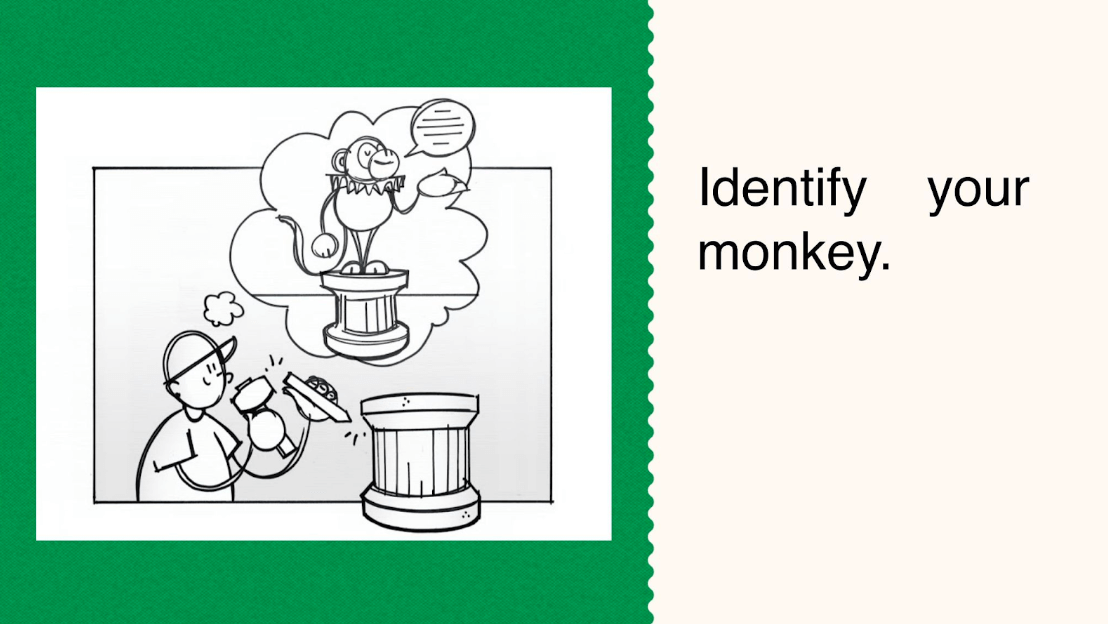
Be honest – which would you choose? If you’d start by training the monkey, you’re a lot smarter than I was when I first heard this fable. I was like, "The pedestal, of course!" It turns out, the right approach is to start with training the monkey. Here's why: training the monkey is the more challenging task.
In the fast-paced world of high-growth companies, it can be tempting – and even encouraged at times – to focus on the smaller, more attainable wins, like building the pedestal.
But here's the kicker: if, after numerous valiant but failed attempts, you can't get the monkey to recite Shakespeare, then all the time, money, and resources invested in building the pedestal go to waste.
However, if you brave the monumental task of training the monkey from the beginning and diligently document every failure along the way, although it may not feel great, you’ll ultimately save valuable time, money, and resources.
Even if you ultimately fail, you can invest those saved resources in more significant projects, rather than wasting them on building a pedestal that will end up sitting in the back of a closet.
It's not always about making quick wins just to show progress. It's about prioritizing the important, albeit challenging, tasks that drive real value.
So, pause and ask yourself, "What is my monkey today?" What is the high-impact project or task that deserves your focus? These projects may take longer to complete, but your time and resources are valuable, so you have to use them where it counts.
Step two: Consider the business and product lifecycle
Another important aspect of determining your best strategy is considering the lifecycle stage of your business or the products you're working on.
Let's take a look at the graph here. This is a traditional curve depicting the business lifecycle, with sales on the y-axis and time on the x-axis.
You can see that as the business grows, sales rise, but eventually, they start tapering off and entering a decline phase. However, by adjusting strategies and pulling different levers, growth can be regained.
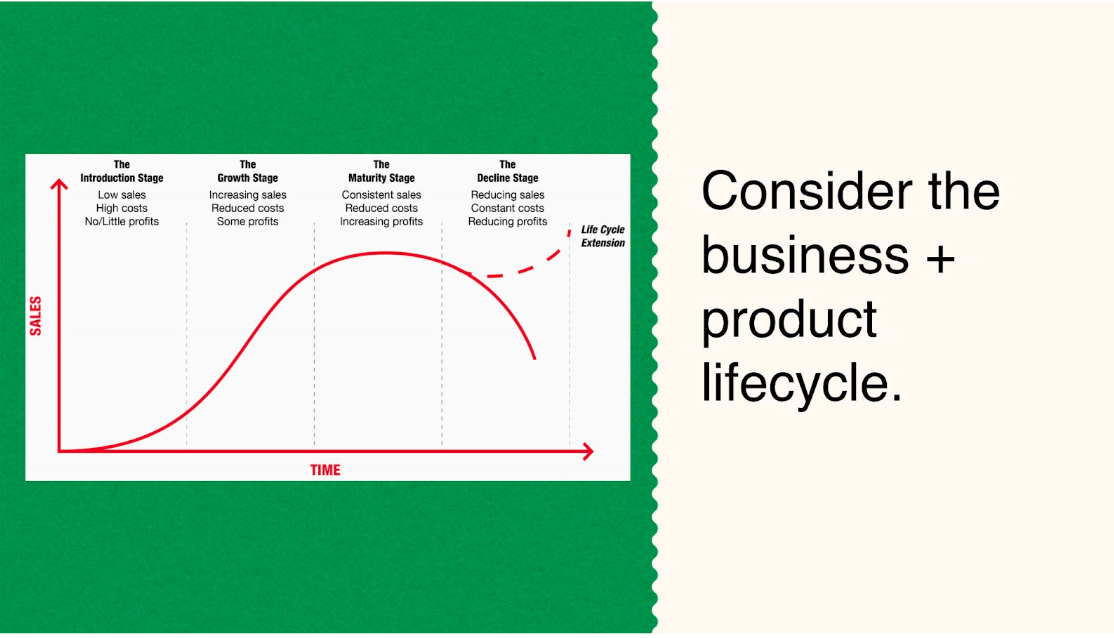
The first section of the graph represents the introduction phase. In this phase, your business or products may not experience significant sales, but you're also relatively new in the market. Here, your focus may be on identifying your personas and educating prospects to build brand awareness.
In the growth phase, which is the second column on the graph, the emphasis shifts to expanding market share and driving revenue growth. The levers you might pull here include customer acquisition or retention tactics.
My point is that depending on the growth stage of your business or products, your needs and goals will vary. This, in turn, affects your processes and strategies as a product marketer and a product marketing team.
To illustrate this, let me share another failure we experienced that turned into a valuable lesson. In our early growth stage at Qwick, we attempted to create a launch matrix. This was an effort to streamline our feature launches and to clarify how we could provide value to our product team.
We spent a lot of time – two or three months – perfecting this launch matrix, only to never utilize it.
If we had thought about the fact that Qwick was transitioning from a startup to a growth stage company, we would have realized that such a process would be more suitable for a more mature company; instead, we created a process where we didn’t need one.
Today, our product marketing team is much more tightly aligned with our product managers. This alignment has brought us into the conversation earlier, giving us a voice and the freedom to think intuitively. We don't follow rigid rules; instead, we move fast.
Reflecting on our 3 Ps hierarchy, I've built strong relationships, so I can now confidently approach our product managers, with any questions I have about a launch – I no longer need a launch matrix. And because I took the time to learn about our product space, I have a good sense of how to meet the evolving needs of our users.
Recap
To recap, in order to successfully drive value for your product marketing team, it's essential to invest in your people and thoroughly research your product space before defining your processes.
Product marketing goes beyond just you and your team; so much of your work relies on gaining agreement and alignment with stakeholders. It also relies on your ongoing research into your product, the market, your personas, and everything that makes up your product space.
It's easy to get caught up in finding the best messaging frameworks or developing intricate launch matrices, losing sight of the real problem or, worse, wasting time on over-engineering solutions for non-existent problems.
I hope the lessons I've shared today have demonstrated that the three Ps of product marketing – people, product, and process – are not only interconnected but they support each other.
I also hope that the tools I've shared can help you refine your own recipe for conducting product marketing at your company. To paraphrase Moira Rose, "I think you guys are ready for this."


















 Follow us on LinkedIn
Follow us on LinkedIn




.svg)
Start the conversation
Become a member of Product Marketing Alliance to start commenting.
Sign up now